

News News Vol. 66, No. 2 – Spring 2023 Turkey Earthquake 2/2023




































































































































































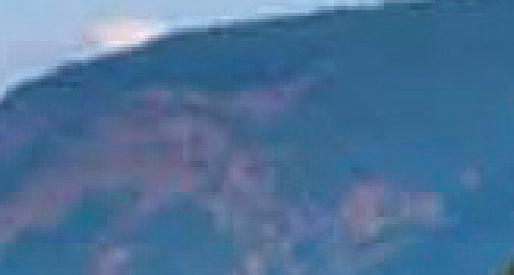

































































































































AEG News (ISSN 0899-5788; USPS 954-380) is published by the Association of Environmental & Engineering Geologists (AEG), 3053 Nationwide Pkwy., Brunswick, OH 44212, four times a year in April, July, and December with the Annual Report and Directory in March. The Annual Meeting Program with Abstracts is published only digitally, in September, and the digital copies are distributed at the AEG Annual Meeting. Association members receive an electronic copy of all five issues of AEG News as part of their dues. Print subscription for Association members, which includes all three regular issues of the AEG News and the Annual Report and Directory issue, is $40 in addition to annual membership dues. Nonmember annual subscription is $50. Back copies of AEG News regular issues are $12 each. Inquiries should be sent to AEG Headquarters: Association Manager, 3053 Nationwide Parkway, Brunswick, OH 44212 330-578-4900.

Periodical Postage paid at Brunswick, OH, and additional mailing offices: POSTMASTER: Send address changes to AEG News, 3053 Nationwide Pkwy., Brunswick, OH 44212.
© 2023 Association of Environmental & Engineering Geologists—All Rights Reserved. Views expressed in this publication are not necessarily those officially representing the Association of Environmental & Engineering Geologists except where expressly stated.
AEG News Editors
Acquisitions Editor: Martha Whitney, Principal Engineering Geologist, Whitney Geologic, news@aegweb.org
Content Editor: Bill Roman, Woodsman, bill.roman.bretz@gmail.com
Managing Editor/Production: Andrea Leigh Ptak, Communicating Words & Images, 206-300 -2067, andrealeighptak@me.com, www.andrealeighptak.com
Submission Information
In order of preference:
1. Send files via email, preferably as attachments, to both email addresses above. Optimum file format is MSWord. Users of other software programs should convert their file to ASCII or text only. Photos and other images, charts, graphs, etc.) should be sent as separate images but may be included in the Word.doc for placement purposes.
2. Images should be sent as high-resolution (250 dpi at 4” wide or larger) jpeg or tiff files and should be named with a strong identifier such as HF-TexasJohn Jones—NOT P204679.jpg. Corresponding photo captions should be included in the text along with an attribution of the source/photographer.
3. The policy of AEG News editorial staff is to limit the credentials of an individual to two. No effort will be made by the AEG News editorial staff to determine if individuals whose credentials are missing from the submitted copy actually have academic or professional credentials, nor will the staff verify the existence or correctness of the credentials submitted.
For detailed guidelines visit: https://aeg.memberclicks.net/assets/docs/aeg_news_style_guide_0713.pdf
Advertising in the News
Contact AEG Headquarters at advertising@aegweb.org.
Submission Deadlines
https://www.aegweb.org/aeg-news-2
Canada Agreement number: PM40063731; Return Undeliverable Canadian Addresses to: Station A, PO Box 54; Windsor, ON N9A 6J5; Email: returnsil@imex.pb.com
On the Cover
The aftermath of the East Anatolian Fault Triple Junction Earthquake Sequence in Turkey on February 6, 2023. Read the firsthand account by AEG member and survivor Efeçan Akyuzon, which begins on page 20.
The association
2022–23 Officers
President: NATHAN SARACENO
Senior Geologist, DiGioia Gray and Associates, Monroeville, Pennsylvania president@aegweb.org
Vice President/President Elect: SARAH KALIKA
Consulting Geologist, DiabloGeo Environmental, San Ramon, California, VP@aegweb.org
Treasurer: RENEE WAWCZAK
Hydrogeologist, Norridge, Illinois, treasurer@aegweb.org
Secretary: PAUL WEAVER
Senior Transportation Geotechnical Project Manager, ESP Associates, Inc., Greensboro, NC, secretary@aegweb.org
Past President: MADDIE GERMAN
Consulting Geologist, Fort Myers, Florida, PP@aegweb.org
Association Contacts Headquarters:
Association Manager: SHERI MASKOW
J&M Business Solutions 3053 Nationwide Parkway, Brunswick, OH 44212 330-578-4900, manager@aegweb.org
AEG Foundation—President: DUANE KREUGER, president@aegfoundation.org
Spring 2023 AEG NEWS 66(2) 3 Table of Contents Index to Advertisers 26 From the Editors 4 The Acquisitions Editor’s Pen . . . . . . . . . . . . . . . . . . . . . . . . . . . . . . . . . . . .4 News of the Association 5 The President’s Message . . . . . . . . . . . . . . . . . . . . . . . . . . . . . . . . . . . . . .5 Vice President’s Message . . . . . . . . . . . . . . . . . . . . . . . . . . . . . . . . . . . . . .6 Treasurer’s Report . . . . . . . . . . . . . . . . . . . . . . . . . . . . . . . . . . . . . . . . . . .7 Secretary’s Report . . . . . . . . . . . . . . . . . . . . . . . . . . . . . . . . . . . . . . . . . . .8 AEG Foundation Reports . . . . . . . . . . . . . . . . . . . . . . . . . . . . . . . . . . . . . .10 Spotlight on 2022 AEG Diversity Scholarship Winners . . . . . . . . . . . . . .10 Committee & Technical Working Group Reports . . . . . . . . . . . . . . . . . . . . .11 Earth Science Tool Kits Give-Away . . . . . . . . . . . . . . . . . . . . . . . . . . . . . . .13 Region Reports . . . . . . . . . . . . . . . . . . . . . . . . . . . . . . . . . . . . . . . . . . . . .14 International Member Spotlight . . . . . . . . . . . . . . . . . . . . . . . . . . . . . . .15 News of the Profession 16 How Does the ASBOG® Exam Process Work? . . . . . . . . . . . . . . . . . . . . .16 Professional Contributions 20 East Anatolian Fault Triple Junction Earthquake Sequence, Turkey . . . . . .20 Field Trips 23 Puget Sound Chapter Fidalgo Ophiolite Field Trip . . . . . . . . . . . . . . . . . . . .23 Sacramento Chapter Volcanology Field Trip to the Sutter Buttes . . . . . . . .25 The HomeFront 27
Photo by Rich D. Koehler, Associate Professor, Nevada Bureau of Mines and Geology, University of Nevada, Reno
News Vol. 66, No. 2 – Spring 2023
Acquisitions Editor’s Pen
Martha Whitney, AEG News Acquisitions Editor

This Spring 2023 edition of AEG News is filled with a variety of content, and I am again grateful to our dedicated members around the world who have taken time out of their busy schedules to contribute. One of my top priorities as AEG News Acquisitions Editor and Director of AEG International Region is to encourage content, discourse, and idea exchange that includes voices from the global AEG community. This issue includes a personal account of the Turkey earthquakes from International Member Efeçan Akyuz and a new "International Spotlight" piece to introduce an AEG member who is studying or working outside the United States. The first to be featured is Rodiat Amusan, who shares her experiences studying, working, and doing community outreach in Nigeria.
This issue also features a report summarizing the recent International Membership Survey. We are also organizing the first International Webinar which will provide an opportunity to learn about academic and professional activities from members around the world. The International Webinar Series will also provide an opportunity for our International Student Members to introduce themselves and provide a brief synopsis of their studies or fields of interest.
Winter is coming to an end, and I am definitely looking forward to spring. I’ve spent a good deal of this winter on vessels in the North Atlantic providing client representative services during geotechnical campaigns to support offshore wind. In February I attended a virtual seminar presenting the Benefits of Offshore Wind
Suggestions and Guidelines
Information to Include:
hosted by the Eureka, California, Chamber of Commerce. It looks like Humboldt Bay is going to be the hub of the west coast’s offshore wind development, and this brings a huge opportunity to the region and to our west coast-based members and Chapters.
Visit www.offshorewindca.org to learn more.
There are several AEG activities on my radar: Microaggression Training on March 11 via Zoom. A microaggression is defined as “a comment or action that subtly and often unconsciously or unintentionally expresses a prejudiced attitude toward a member of a marginalized group.” I am looking forward to gaining some tools to effectively educate and promote awareness, as this comes up often in my international travels, and I can at times find myself at a loss as to how to appropriately handle it.
On March 14, the 2023 Portland Annual Meeting Committee has a scheduled committee call. This is a great opportunity for the Pacific Northwest AEG contingent to get involved and help make their meeting the best that it can be!
The Mid-Year Board Meeting in northern Ohio is scheduled for late April and the Annual Meeting in Portland is in September (abstract deadline is May 1). More field trips, more fascinating talks, and more fun!
Please keep us in mind as you embark on the various AEG Chapter, committee, and technical working group activities, and consider writing up an article (with photos!) for AEG News
HomeFront Submission Tips
■ Approximately how many folks attended the Field Trip/Social Event/Guest Speaker/Chapter Meeting? Any New Members? Students?
■ Was it an all-day event? Half-day? Private transport, carpool, bus, boat?
■ Did folks gather for a meal (i.e., box lunch provided, or lunch at XXX)? Meet-up somewhere after?
■ Was there a regular Chapter meeting before/after the field trip?
■ What were some of the topics of discussion at the outcrop/ overview/site?
■ Are there studies planned to investigate aspects of the site?
Reminders for AEG News content submissions:
Document File Name – Before submission, name your file with a strong ID rather than a generic file name like “June AEG NEWS article.” Examples: Treasurer’s Report-June.doc, STL Doe Run Field Trip.doc.
Image Size and Cropping – Images should be separate files, in jpeg or tiff format, and at least 1MB; bigger is always better. Please do not crop images; the layout artist will handle that during the production stage. If special cropping is required, add a note to your text copy.
Image Name – Please RENAME your image file with a strong ID, preferably with the intended figure name and refer to the image name in the text. Example: See figure 1 [HF-NYP.June2013.Image.1.jpg]
Image Captions – Place figure captions under the subheading “Figures” following the main text of the article in the submission Word document. Include the image name for easy identification. Example: Figure 2. John Smith of the USGS described the structural damage done by the recent mudslide on Whidbey Island. [HF.WA.June2013.FieldTrip2.jpg]
Photo Credit – If applicable, give a simple credit to the photographer, including copyright if required. Example: Photo Courtesy of USGS. © 2013 John Smith, Seattle, WA.
Please see the two-page AEG News style guide at https://www.aegweb.org/assets/docs/aeg_news_style_guide_ 0713.pdf
FROM THE EDITORS 4 AEG NEWS 66(2) Spring 2023
Promoting Geology for the Public Good
Nathan Saraceno, 2022–23 AEG President

s I write this article, I have just recently finished my first Chapter visit as AEG President. The Carolinas Chapter afforded me the opportunity to speak with numerous students at five universities in Tennessee and the Carolinas, as well as present to over seventy people in attendance at the Chapter meeting that Thursday evening. A big “Thank you!” goes out to the Carolinas Chapter leadership and especially Rick Kolb, who invited me to speak and helped organize all the school visits and hotel arrangements, and of course the Chapter Meeting itself. It was a fun, exciting, and educational experience, and I look forward to my upcoming visits to the Oregon, Nisqually, and Puget Sound Chapters in February; San Francisco Bay, Sacramento, and San Joaquin Valley Chapters in March; and several more AEG Chapters throughout the rest of the year.
During my week in the Carolinas, AEG was made aware of several threats to Professional Geologist licensure in the states of South Carolina, Utah, and Virginia. These threats were coming in the form of proposed legislation that would effectively end geologist licensure in those states. AEG members in each of these states helped to organize opposition efforts. As of now, opposition efforts have been successful in at least postponing these bills. However, this means the same or similar legislation could resurface down the line. AEG will continue to support our members when threats arise. We thank those members who helped coordinate efforts to protect licensure: James Heller, Ben Erickson, Jonathan Gerst, Gary Rogers, Skip Watts, and many others.
It is important to promote the value of applied geology for the public good. This is relevant when threats to our Professional Geoscientists Licensure such as those briefly discussed above occur. One of the most effective means of protecting professional licensure is by residents of the relevant state (i.e., voters) reaching out to their representatives (via phone, email, or in-person events) to support licensure and explain why it is important. Often, a few high-level talking points are all one really needs. Not sure what to say? Start with these reasons for why professional licensure for geologists is important:
1.Protecting public health and safety: Geologists are often involved in the design and construction of critical infrastruc-
ture projects, such as dams, bridges, and tunnels. Professional licensure ensures that those working in these fields are qualified to ensure the safety and integrity of these projects.
2. Maintaining high professional standards: Professional licensure provides a framework for establishing and maintaining high professional standards in the geology industry. Licensure typically involves passing an exam, meeting education and experience requirements, adhering to a code of ethics, and fulfilling continuing education requirements.

3.Ensuring accountability: Professional licensure provides a mechanism for holding geologists accountable for their actions. Licensing boards have the power to investigate complaints of professional misconduct or malpractice and take disciplinary action up to and including revoking a license. This can help protect the public and maintain the integrity of the profession.
The above reasons are of course not all-encompassing, but they are a good start. For more information about professional licensure and resources to help support licensure in your state, visit the AEG website. The main menu along the top of AEG’s home page provides access to an entire section on licensure: https://aeg.memberclicks.net/licensure-resources. Be sure to visit the sub-menu items in the drop-down list for more resources!
HEADER HERE Spring 2023 AEG NEWS 66(2) 5
NEWS OF THE ASSOCIATION – THE PRESIDENT’S MESSAGE A
“ ”
One of the most effective means of protecting professional licensure is by residents of the relevant state (i.e., voters) reaching out to their representatives
AEG President Nate Saraceno gives tips on job hunting and interviewing to students at Furman University during his recent visit to the Carolinas Chapter in January of this year.
AEG – Protecting Licensure & Coordinating Committees in 2023
Sarah Kalika, 2022–23 AEG Vice President

The year 2023 began with three threats to Professional Geologist licensure in the form of state legislative bills in Virginia, South Carolina, and Utah. Members and colleagues in these states quickly sprang into action with letter-writing campaigns and momentum to oppose these bills. Here is where we stand:
South Carolina:
Bill SC H3515 https://legiscan.com/SC/bill/H3515/2023
Introduced on January 10, 2023, the “entrepreneur freedom act” seeks to repeal registration for professions including hair braiding, embalmers & funeral directors, landscape architects, psychologists, social workers, speech pathologists, professional counselors and therapists, education specialists, teachers, geologists, and the state athletic commission.
Status: According to a recent update from membership in SC, this bill appears to be headed to die in committee.
Utah:
SB123 https://le.utah.gov/~2023/bills/static/SB0123.html
was introduced in this year’s legislative session. The intent of the bill is to repeal statutes that created a number of boards and commissions. One of those included for repeal is the Professional Geologist Licensing Board.
Commentary from AEG member in Utah: To the extent I can determine, it does not repeal licensure. However, I find it difficult to see how licensing can be overseen without a licensing board in place. This is part of an effort to reduce the number of unnecessary boards and commissions.
AEG members and others within the state reached out to the bill sponsor (Representative Wayne Harper, Utah’s District 16). This was the result: For those not aware of the current state of the proposed removal of the PG licensing board, I was able to contact Senator Harper, and he informed me they are going to remove our group from the bill. They are planning to re-evaluate our board in the spring after the legislative session is over. The new evaluation will determine the future of the board within the state and include stakeholders, including AEG and the Utah Geological Association in the discussions.
Status: Watching and waiting to see if this is picked up again in the spring
Virginia:
SB1480 https://lis.virginia.gov/cgi-bin/legp604.exe?231+ful+SB1480
Bill introduced by a state senator to eliminate licensure.
Per Dave Spears (recently retired as State Geologist of VA), a large force has assembled to oppose this bill.
Lobbyist in place (hired by ACEC, loaned to the geologists for this effort only) – Skip Watts (AEG member and retired professor) spoke to the lobbyist and appeared at the hearing.
Status: Active opposition; Motion to "passed by indefinitely" in committee, which effectively kills the legislation for this legislative year.
Special Licensure Committee Meeting
During this meeting, held in February 2023, we discussed the existing resources already available on AEG’s website, prepared for use in fighting threats to geologist licensure. ASBOG additionally has a Model Law that was written to support efforts to create licensure in states that may not yet have licensure on their books. A link to ASBOG’s Model Law is included on AEG’s Licensure Resources page: https://aeg.memberclicks.net/licensureresources .
We suspect that future threats to geologist licensure will pop up in these or other states in the future, so it’s best to be prepared in advance. AEG is currently exploring development of a short video highlighting the importance of geologic licensure with the intent that it can be passed along to legislators and their staff in an attempt to summarize why licensure should be preserved. Many legislators are not scientists, nor are they aware of the many important reasons for professional licensure.
What You Can Do Today:
Identify who represents you at the State and Federal legislative levels. If you’re not sure, find out!
If you’re able to, schedule a visit to your local representative’s office and meet with their staff. Bring your business card! Offer yourself as a resource (whether you have one or fifty-plus years of experience, you likely know more about geology than their staff).
Be prepared to defend licensure in your state by calling your representative—they work for your votes.
We’ll hold a follow-up Licensure Committee meeting in late spring to see how things are going. Let us know if you would like to join us (vp@aegweb.org).
Committee Leaders Town Hall
Switching gears…I’m excited to announce an upcoming meeting planned in effort to help Committee Chairs get to know each other and familiarize themselves with what committees are accomplishing in support of AEG and our Strategic Plan.
As Vice President, one of my tasks is to attend as many operational committee meetings as possible and serve as a liaison between the committees and the Board.
HEADER HERE 6 AEG NEWS 66(2) Spring 2023 NEWS OF THE ASSOCIATION – VICE PRESIDENT’S REPORT
As you may know, AEG’s volunteer network is the backbone of our Association. Committees are what help propel AEG forward and ensure that we are fulfilling the goals outlined in our Strategic Plan. Often, individual committees work on different parts of the puzzle and it might be difficult to envision the whole picture. To help you understand how your committee’s activities and actions fit within the larger goals of the Association, we’re setting up a Town Hall meeting in March 2023 so we can network and get any questions answered. Committee Chairs will report on:
■ What their committee has been doing during the past six months
■ Specific goals for actions over the next six months
■ Number of committee volunteers (is this enough/too much/not enough)
■ Committee needs (immediate/over the next year/dream wish list)
■ Questions for the AEG Executive Council or Association Manager

If this meeting is successful in bringing our Committee Chairs together, I plan to make it a recurring event to happen twice a year.
As always, thank you for your support and enthusiasm for AEG! Watch this column for more committee updates.
Have You Renewed Your Membership?
f you have not renewed your 2023 membership, now is the time! As of February, we show a strong renewal rate in all categories, but we still have not hit our full renewal numbers. Did you know that Full Members make up 46 percent of our membership, but their dues generate 91 percent of our income? Our members help keep our Association strong, not only financially but also professionally due to our collective knowledge, camaraderie, and leadership in the profession. Renewing your membership continues access to all of AEG’s great membership benefits including member rates to Association and Chapter events, access to publications, abilities to search the AEG job board, and so much more!
Member Categories
Are you a recent graduate, about to graduate, or know someone who is? AEG offers an Early Career Membership rate for the first three years of membership after graduation. That provides you with the same great membership benefits at a discounted rate as you begin your career! And as always, Student memberships are free! Being a Student Member allows you access to Association and Chapter events at a discounted student rate when available, scholarship opportunities, and excellent networking opportunities to help you land your first job after graduation.
Finally, AEG offers a Sustaining Member option at renewal for those who can contribute to the Association above and beyond the renewal rates. The generosity of all Sustaining Members is recognized within the Annual Report and Directory.
Thank you for your continued contributions to AEG! These additional funds help support implementing our Strategic Plan, supporting committee initiatives, and other improvements within the Association.
Thank you to all of those that have already renewed your membership this year. AEG appreciates you and looks forward to another great year!
Membership 2020–2022
Category Base Dues 12/2020 12/2021 12/2022 Current: Amount 02/2023 Affiliate $110 43 51 49 38 Early Career Full $80 88 125 167 93 Emeritus $50 27 33 39 36 Full $160 1,223 1,322 1,384 1,072 Honorary $0 20 22 22 22 International $25 74 84 77 52 International Student $0 162 194 212 140 Life $0 52 51 52 51 Senior Emeritus $0 133 142 143 141 Student $0 985 893 947 678 Teacher $40 55 76 84 61 Total Membership 2,862 2,993 3,176 2,384 Subscription Only (publication houses, libraries) 49 30 31 24 NEWS OF THE ASSOCIATION – TREASURER’S REPORT NEWS OF THE ASSOCIATION – VICE PRESIDENT’S REPORT Spring 2023 AEG NEWS 66(2) 7
Renee Wawczak, 2022–23 AEG Treasurer
l
Getting Into the “Swing Of Things”
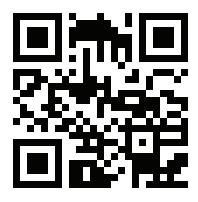
and the Awesomeness of Volunteering
Paul Weaver, 2022-2023 AEG Secretary

t has now been (or will be by the time this article appears in AEG News) about six months since I joined the AEG Executive Council (EC) as your new Secretary. One of the main jobs of the Secretary is to take minutes for all the EC and Board of Directors (BOD) meetings (thank goodness I took a year of typing classes in high school!). For those of you who are not aware of this, the EC has a full-day meeting four times a year. The summer and winter EC meetings are allday conference calls while the spring and fall meetings are fullday, in-person meetings at the Mid-Year Board of Directors meeting and at the Annual Meeting, respectively. To improve communications with the AEG members, I will be participating in conference calls with the Chapters following each BOD meeting (both the Mid-year Meeting and the Annual Meeting) to summarize the discussions and action items.
Even though I have been a part of AEG for many years, including terms as Carolina Chapter Chair, Southeast Regional
Director, and as a member of the AEG Board of Directors, I now have an even better appreciation of the dedication required to serve as member of the AEG leadership. The time and focus on AEG by the leadership on a purely volunteer basis is truly astounding; this includes not only the other members of the EC but also the Chairs of the various AEG operational committees: Martha Whitney and Bill Roman for the AEG News, the Regional Directors, the Chapter Chairs, the Annual Meeting Planning Committees, the leaders of the Technical Working Groups, the members of the AEG Foundation, and many others (please forgive me if I left out anyone).
It should be noted that most of the AEG volunteers serve in multiple roles (i.e.: EC, BOD, Chapter officer, Committee Chair/Member, etc.). If you are not a member of an AEG committee or technical working group, I highly encourage you to check out the participation opportunities listed on the AEG website. For committees, look under the “Volunteer” tab and click on “Operational Committees” and/or “Technical Working Groups.” If you are not already, I highly recommend that you become involved or more involved as a volunteer with AEG; I know from experience that you will find it rewarding and that you will enjoy the opportunity that volunteering provides to make AEG even stronger and to meet, and possibly become good friends with, AEG colleagues.
It “does my heart good” (that’s a Southern phrase by the way) to see AEG continue to strive and this is in very large part due to the commitment of all of the volunteers that keep AEG going. We are continuing to see increases in membership and in revenue to support all the activities AEG does.
I’m looking forward to continuing my service to AEG, and I hope that you will too. I hope to see you all at the Annual Meeting in Portland this September!

HEADER HERE 8 AEG NEWS 66(2) Spring 2023 NEWS OF THE ASSOCIATION – SECRETARY’S REPORT
AEG News Disclaimer
alone are responsible for views expressed in signed articles. Advertisers and their agencies are solely responsible for the content of all advertisements printed and also assume responsibility for any claims arising therefrom against the publisher. AEG and AEG News reserve the right to reject any advertising copy.
Feedback.
suggestions, or questions should be sent with the writer's name, address, and daytime phone number via e-mail to news@aegweb.org. l TECCO® GREEN G65/3 www.geobrugg.com/tecco | | www.geobrugg.com
Authors
AEG News Welcomes Your
Comments,
2022–23Corporate Sponsors
DENALI
Geobrugg
Tim Shevlin
Tim.Shevlin@geobrugg.com
(503) 423-7258
www.geobrugg.com

Maccaferri North America
Mike Koutsourais
10303 Governor Lane Blvd
Williamsport, MD 21795
301.641.8072
www.maccaferri.com/us

m.koutsourais@maccaferri.com
Scintrex
Bill Male
bmale@scintrexltd.com
(905) 669-2280 ext 343
https://scintrexltd.com
University of Pennsylvania

lps@sas.upenn.edu
(215) 898-7326
https://www.lps.upenn.edu/hs/msgo
ADD YOUR COMPANY TO THIS LIST OF SUPPORTERS
An investment in AEG is an investment in the future of engineering and environmental geology. For information on sponsorship opportunities: https://aegweb.org/corporate-sponsors-and-advertising
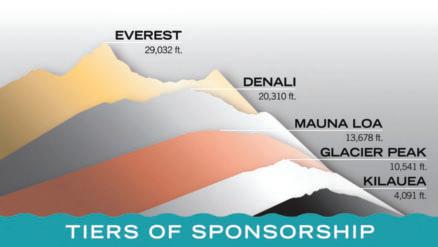
Glacier Peak
BGC Engineering Inc.

Tony Monasterio tmonasterio@bcgengineering.ca
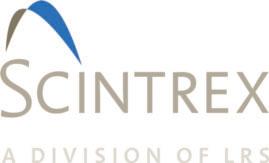
208-559-6050
www.bcgengineering.ca
Bryan Environmental Consultants


Patricia Bryan pbryan@bryanenv.com
http://www.bryanenv.com
DiGioia Gray

Nate Saraceno nsaraceno@digioiagray.com
(724) 498-0984
www.digioiagray.com
Envirotech Drilling Services
David Draybuck david@envirotech-services.com
713-423-5220
www.envirotech-services.com

GeoStabilization International

Dru Miller dru.miller@gsi.us www.geostabilization.com
Kilauea
Earth Consultants International Eldon Gath gath@earthconsultants.com
{714) 412-2653
www.earthconsultants.com
GeoEngineers, Inc.

Mark P. Molinari mmolinari@geoengineers.com
(206) 518-5152
www.geoengineers.com
AEG’s Strategic Goals:
1. Increase Membership and Member Communication
2. Advance our Profession through Education and Networking
3. Strengthen AEG
4. Embrace Diversity, Equity, and Inclusion
HEADER HERE Spring 2023 AEG NEWS 66(2) 9 NEWS OF THE ASSOCIATION
We Depend on Your Support
Nichole J. Vetter, PG, AEGF Director
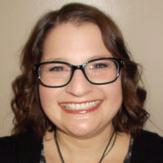
Scholarship Update
The AEG Foundation (AEGF) was able to award nineteen scholarships totaling $51,500 in 2022! It’s supporters like you, who made that possible. Because of you, students and professionals can focus on becoming great environmental and engineering geology practitioners. AEGF would like your continued support so we can increase the number of scholarships and grants that we can provide in 2023. If you would like to make a donation, please visit https://www.aegfoundation.org/donate/index.php You can choose to make a one-time donation or get set up to support your chosen fund(s) on a monthly basis.

Annual Meeting Silent Auction
AEGF is delighted to announce that it will be hosting a Virtual and In-Person Silent Auction for this year’s Annual Meeting in Portland! If you have mineral specimens, fossils, jewelry, or other fun and interesting items, please consider donating them to the Silent Auction. AEGF would especially be interested in items made by AEG members (paintings, pottery, jewelry, photography). If you have an item that you would like to donate, please email a photo of the item with the description, approximate value, and whether you will be attending the Annual Meeting and bringing the item with you to staff@aegfoundation.org. Don’t worry, if you’re not able to attend the meeting, you can still donate an item, and AEGF will assist with getting the item to highest bidder.
Spotlight on 2022 AEG Diversity Scholarship Winners
The Diversity Scholarship was established by members of AEG’s Diversity, Equity, and Inclusion Committee in 2021 to be awarded annually to a student who is a geoscience major with a GPA of 2.9 or better in their sophomore, junior, or senior year at an accredited college or university. Erika Hernandez and Marco Rodriguez were inaugural recipients of the scholarship in 2022 and provided the following brief bios and photos.
Erika Hernandez
I am from Dobson, North Carolina. I currently live in Boone, North Carolina, where I am a senior at Appalachian State University. I will be graduating this May with a bachelor’s degree in environmental science and a minor in geology. I plan on going to graduate school within the next two years to study environmental policy. My future goal is to become an environmental planner or environmental specialist. I am particularly interested in helping to propose solutions to combat climate change through my knowledge of the earth’s physical, chemical, biological, and geological processes.
In my free time, I enjoy doing yoga, journaling, and spending time in nature. I recently helped out at a station at the Watauga County Environmental Field Day by teaching fifth graders about vesicles in the soil. Before the event was over, I
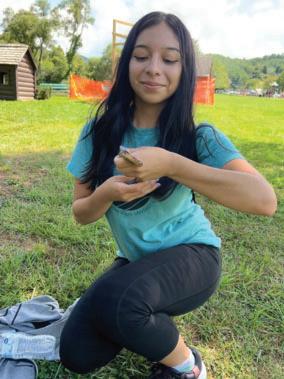
rushed over to check out the snakes a park ranger was educating students about. The snakes were very friendly! Thank you again AEG Foundation for selecting me as a diversity scholarship recipient. This scholarship has helped me tremendously.
Marco Rodriguez
I am a senior at California State University, Fresno. I will be graduating in May 2023 with a bachelor’s degree in Geology. I plan on returning in the fall to start my graduate studies, which will focus on geohazards, more specifically landslides. My career goal is to work as a landslide\geohazard geologist in the state of California.
NEWS OF THE ASSOCIATION – FOUNDATION REPORT 10 AEG NEWS 66(2) Spring 2023
Committees
Diversity, Equity, and Inclusion Committee (DEIC)
Deborah Green, Co-chair
As 2022 drew to a close, the DEIC agreed it was a good time to reflect on the bigger picture of AEG’s DEI initiatives—the “why” of our committee and “what we’ve accomplished.”
So, one of the DEIC Co-Chairs, Jenn Bauer, sent the following link, https://notimeforsilence.org, to the committee to read. It is a Call to Action, #notimeforsilence, issued by a group of geoscientists of color in June 2020. The DEIC decided to evaluate our projects—those completed, in progress, and those we haven’t launched yet—in light of this Call to Action.
The DEIC also wants to ensure that diversity, equity, and inclusion are taken into account in AEG’s overall strategic initiatives.
b. Fully implement strategic plans with all necessary resources.
AEG’s DEIC is working on several projects related to those four goals, including: communicating with our members with articles such as this one in AEG News and pieces written for the AEG Insider and AEG’s social media (Communication); the AEG Foundation awarding the first Diversity Scholarships and Field Trip Grants in 2022 (Support for a Diverse Future for the Geoscience Profession); conducting a survey in 2022 of AEG members in the United States and planning for a survey of international members in 2023 (Data Collection); and convening DEI symposia at the last two annual meetings and planning one for 2023; participating in AGI’s Intersociety Committee on Diversity, and encouraging AEG’s leadership to sign (which they did) AGI’s Framework for Addressing Racial and Ethnic Equity in Geosciences Professional Societies (Education/Collaboration). Those are just a few examples; the DEIC has ambitious plans to continue to make our organization, and our profession, more inclusive.
c. Track progress against traceable metrics that hold professional societies accountable.
AEG’s DEIC is tracking the progress on the projects we are implementing.
d. Diversify their leadership and staff with scientists drawn from underrepresented racial/ethnic, cultural, and ability groups. Diversification requires sharing both the responsibility for power (membership on advisory boards and councils) and power itself (membership on executive councils, governance, and on the boards with policy decision-making authority).
We encourage all AEG members to read it. Though it is painful to see what our colleagues of color and scientists of other underrepresented groups have had to endure, it is eye opening. Below you will see the specifics of their call to action for professional societies, and where the DEIC thinks AEG is in relation to those actions.

We call on:
Scientific professional societies, in particular those in the geosciences, which have one of the lowest representations of Black, Latinx, Indigenous, Asian/Pacific Islander, Middle Eastern, and North African students and faculty in the scientific community to:
a. Develop robust and meaningful diversity, equity, and inclusion strategic plans.
AEG’s DEIC has defined four goals and is working on projects related to them. These goals are:
■ Communication
■ Support for a Diverse Future for the Geoscience Profession
■ Data Collection
■ Education/Collaboration
AEG’s DEIC cannot tackle this as a committee, but we are calling on and teaming with the Strategic Initiative Coordinators, and the Board of Directors and Executive Council to do so. The Nominations Committee has requested that bylaws require that a member of the DEIC serve on their committee, so there will be a voice for diversity, equity, and inclusion in selecting the Association’s future leaders.
e. Diversify the selection process for invited speakers and invited papers with respect to underrepresented racial/ethnic, cultural, and ability groups.
AEG’s DEIC is actively pursuing this through the symposia we have, and will continue to convene at the AEG Annual Meetings.
f. Examine why the award recipients are not diverse and make an effort to encourage nominations for awards—especially the early career awards—to be diverse with respect to underrepresented racial/ethnic, cultural, and ability groups.
Members of AEG’s DEIC have prepared nominations for awards of deserving members of diverse backgrounds, and we will continue to do so.
Though we can’t list all the projects we are working on in one article, the DEIC is doing a lot to heed this Call to Action. It
HEADER HERE Spring 2023 AEG NEWS 66(2) 11
NEWS OF THE ASSOCIATION – COMMITTEE & TECHNICAL WORKING GROUP (TWG) REPORTS
is, indeed, No Time for Silence on diversity, equity, and inclusion. That being said, we have far to go, both in AEG and in our profession in general. Please do what you can to answer this call.
Student & Young Professional Support Committee
Rick Kolb, Co-Chair
Hints for Job Hunting
We all know that finding your first job or a new job is a challenging and often frustrating experience. Are you at the start of your career as a recent graduate or considering a career change? Would you like to brush up your interviewing skills? The Student & Young Professional Support Committee of AEG surveyed practicing environmental and engineering geologists for suggestions to help students and young professionals find that first or new job. The following is a list of suggestions from AEG geologists with experience that ranges from more than forty years of practice to those who only recently started working and who are still looking to start their geological careers.
Researching and Recruiting:
■ Join a geological organization and attend their meetings. It is common knowledge that one of the best ways to find a job is by networking. Practicing geologists attend professional meetings, such as AEG’s Chapter meetings and its Annual Meeting and these professionals often know if their company or other companies are searching for potential hires. In addition, representatives of service companies such as drillers, laboratories, and other contractors also attend these meetings to meet potential clients, and they often know which companies are hiring and of contacts at that company.
■ Attend hiring events and career fairs and join listservs of applicable groups.
■ Reach out to the hiring team or program of companies that interest you and develop a professional relationship with them to stay on their radar.
■ Join the alumni association of the university you attended and get to know alumni from your school’s geology department; you have an instant connection with them. Universities have learned this benefit, and many have developed mentoring programs that link their alumni with students and recent graduates.
■ Consider the public sector. State governments hire geologists for regulatory agencies, the state department of transportation, and the geological survey. On the federal level, geologists are hired by the US Army Corps of Engineers and the Departments of Interior (USGS and USEPA), Energy, Agriculture, and Transportation. In addition to existing vacancies, governments are well aware that many of their employees are approaching retirement and will soon need to be replaced. A benefit of working in the public sector is that you will have many opportunities to transfer to other departments and agencies without losing your seniority. Check out www.usajobs.gov/
■ Join LinkedIn if you haven’t already and review the profiles of other geologists while you prepare your own, even if you’re still a student. Keep your profile up to date.
■ If you are a student, become involved in your department’s geology club or AEG Student Chapter and ideally become an officer of the organization. Start a geology club if your school doesn’t have one and show these activities on your resume. These actions show initiative, and employers love to hire people with self-initiative.
■ If you are not a student, become (or stay) active in your local/state geological organization(s), and again, get involved in the management of the organization to show that skill, and secondarily, to network with other geologists.
Resume and Cover Letter:
■ Remember that people who review your resume often look at dozens of them. You need to figure out a way to make your resume stand out from the others. How can you make it different? One example: Take the ASBOG® Fundamentals of Geology (FG) exam. Once you pass it, you can add G.I.T. (Geologist-in-Training) after your name on the top of the resume. In some states, college students can take the FG exam after completing a certain number of credit hours. Showing yourself as a G.I.T. differentiates you from many of the other resumes and tells the reader you are serious about becoming a professional geologist. It could also give you something you have in common with the interviewer. Details are at www.asbog.org
■ If you are not submitting your resume online, you will need a cover letter. Keep it to one paragraph and highlight features of yourself that you think make you unique when compared to the dozens of other applicants. Sometimes the reader may not even look at your resume if your cover letter is meh.
■ Keep your resume and cover letter relevant to each specific job application. Ideally, keep your resume to one page, but if you have significant experience, it can go to two pages. To keep it shorter, you don’t have to include references; a potential employer will ask for these later if they are considering you as a hire.
■ Once you have work or internship experience, place it at the top of your resume before education to place it front and center.
■ Less is more, but be sure to highlight qualifications on which you can elaborate during the interview.
Interviewing:
■ Dress to impress, not just for the job title. While it’s unlikely that you’ll wear a suit to work in the office, wearing one (or something distinctive) for an interview will attract attention, and that is good.
■ Prepare for questions based on the job description, gaps in your resume and cover letter, and behavioral questions/ personality types. It only helps you to tell the interviewer how much you enjoy working outdoors, a common place to
HEADER HERE 12 AEG NEWS 66(2) Spring 2023
NEWS OF THE ASSOCIATION – COMMITTEE & TECHNICAL WORKING GROUP (TWG) REPORTS
start for entry-level geologists, or to travel if the position requires travel.
■ Prepare questions for the interview panel to showcase interest in the job and company. You must research the company you are interviewing with; prepare a few questions about the company based on that research. This shows the interviewer you are truly interested in their firm.
■ Remember that you are interviewing an employer as much as the employer is interviewing you. You may want to ask how many geologists the employer employs, what types of roles and career paths they have, and what sort of projects they work on. You may find out in the interview that this is not the place you want to work. It’s better to find that out before you start working there.
■ Thank them for the opportunity to interview and follow up within 48 hours with a thank you note or email. Sadly, it seems that nowadays many potential employers do not
notify those interviewed that they are not being considered for a job. But keep in mind that most employers have openings regularly. Even if you are not considered initially, don’t be afraid to recontact the person who interviewed you after six months to let them know you are still available.
Overall:
■ Do not undersell yourself during your job search. Stay positive; you will find a job, and in today’s market, that’s just about guaranteed.
■ At the entry-level, employers are looking less at the skills and more at the character of a potential employee.
■ Seek mentorship from those who have a desirable career and learn how they got there. Professional and alumni associations are ideal places to find a mentor.
■ Keep your goals in mind, pay your dues, and you will find success is just around the corner.
Earth Science Tool Kits Give-Away
Paul Weaver, AEG 2022–23 Secretary/AEG Carolinas Chapter Advisor
For well over ten years, the Carolinas Chapter has been purchasing and giving away earth science toolkits at the annual meeting of the North Carolina Science Teachers Association (NCSTA). Due to COVID, the NCSTA conference was canceled in 2020 and 2021, so we were excited that the conference was able to be held again in 2022.
The Chapter purchased 250 toolkits from AGI and had them shipped to us in plenty of time for the convention on November 3 and 4. We secured the AEG booth materials from AEG headquarters, and after explaining to the NCSTA exhibitor organizer that we are a non-profit group not trying to sell anything but were instead only wanting to give away packets of materials to assist the teachers in their earth science lessons, they agreed to provide us with exhibitor booth space for free.
Once the dates for the conference arrived, I, along with my wife Chris (I consider her an “ad hoc AEG member”) transported all of the boxes of toolkits (250 toolkits equals about eight goodsize boxes weighing around 30 or 40 pounds apiece) along with the AEG booth materials and set up the booth at the Benton Convention Center in downtown Winston-Salem. Since the conference lasted for two days (a Thursday and Friday), Chris and I manned the booth all day Thursday, while Rick Kolb and Jane Gill-Shaler took over the booth duties on Friday.

The science teachers, as usual at this conference, were very excited and grateful to receive the toolkits. In case you’ve never seen what a kit includes, you can look on the AGI website. But generally, it has all kinds of teaching materials including posters, handouts, etc., with materials that can be applied to teaching grades kindergarten through high school. Those of us handing out the toolkits also greatly enjoyed talking to all the teachers who stopped by the booth and sharing our excitement at being geologists.
The Carolinas Chapter includes the costs for the earth science toolkits in our yearly Chapter budget. We believe it is a very important and necessary expenditure of our funds. In addition to that, those of us who participate feel that this outreach is an important expenditure of our time and energy.
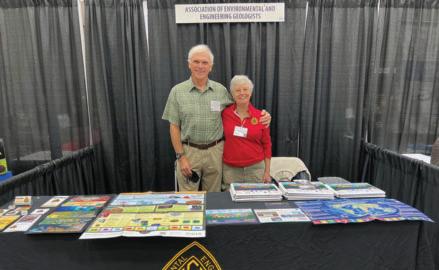
NEWS OF THE ASSOCIATION – COMMITTEE & TECHNICAL WORKING GROUP (TWG) REPORTS Spring 2023 AEG NEWS 66(2) 13
Rick Kolb and Jane Gill-Shaler
Chris and Paul Weaver
Region 11 – International – Special Report
Martha Whitney, Director
Summary of the International Membership Survey
Jambo, Merhaba, Sannu, 안녕하세요 (annyeonghaseyo), Greetings, Kamusta, G’day, Hola, Bonjour!
Did you know that AEG’s International Region represents 58 countries? When I was elected Director of Region 11 last year, I knew it would be a challenge to connect with 293 people from so many corners of the earth. I discussed strategy with Mark Hendrickx, and we created a survey to help us get to know our members. Thanks to the folks at AEG’s association management firm, J&M Business Solutions, we sent the survey out (a few times), and in the end, we had 43 folks respond. The top five ‘takeaways’ are:
1. Access to journal and technical resources was the leading value our international members identified, followed by webinars and networking (closely tied for second), and conferences. Several people expressed a desire for virtual networking and mentorship opportunities. International members would like to connect with United States-based members who can provide technical guidance and/or advice as professional mentors. I will endeavor to establish an international mentor program that connects members who work in similar arenas and can share their experiences, expertise, and technical problem-solving strategies.
Q1 What do you value most about your membership with AEG?
Q3 What are some topics you would like to see represented in the webinars?
2. More than half the respondents are interested in sharing their academic or professional experiences in a webinar series. I have already emailed all our international members about this, and I hope to offer the first International Webinar this spring. All the AEG community is welcome, and the time will be arranged to accommodate as many registrants’ time zones as possible. Based on the survey, the top topics for webinars are as follows:
■ Engineering geological modeling
■ Landslide investigation/design/remediation AND Ground investigation case studies (tied for second most popular)
■ Tunnelling
■ Naturally Occurring Asbestos (NOA)
■ Environmental site investigations, erosion control, mining geotechnology, dam design, and professional liability were all write-in topics.
3. A great number of respondents expressed interest in participating in “virtual round table” discussions on specific topics of interest as requested by our members. I’ll be looking for mediators and trying to organize the first of these VRTs in the coming months. If you are interested, please contact me with your topic of interest and availability. If we have good participation, we will try and do this a few times a year.
4. More than half of the respondents are not aware of the many scholarships and grants that are available through the AEG Foundation. I think the reason for this is that no scholarships or grants are currently available to members who live outside the United States. I am looking into ways to develop international funding opportunities.
5. Most of our members access AEG resources every month, and AEG News is the number one accessed resource, followed by the website, and the E&EG Journal.
The survey was very helpful for me to understand how AEG and I personally can better serve the 293 International Members. Thank you to everyone who took the time to complete the survey. I am looking forward to organizing events and helping people connect. I would like to remind our members around the globe that there are several Technical Working Groups (TWG) that are the perfect starting point for making connections with practicing professionals in your field of interest. Please visit https://aeg.memberclicks.net/technical-working-groups to find the TWG that is right for you!
RALLYING the REGIONS:
This section of the AEG News is dedicated to Region Reports and provides an opportunity to summarise the activities of all Chapters within the Region. Directors and Chapter Chairs can work together to prepare a report that summarises the activities of their region. This can increase attendance at future events, stimulate discourse, and even increase volunteerism.
REGION REPORTS 14 AEG NEWS 66(2) Spring 2023
Answer 43 Skipped 0 o% 10% 20% 30% 40% 50% 60% 70% 80% 90% 100% Networking Opportunity Access to Journal and Resources Conferences Webinars Other–Please Comment
Answer 43 Skipped 0 o% 10% 20% 30% 40% 50% 60% 70% 80% 90% 100% Landslides Investigation Ground Investigation Engineering Geological Modeling NOA Tunneling Other–Please Comment
MInternational Member Spotlight

y name is Rodiat Amusan. I am from Abeokuta in the southwestern part of Nigeria. I am presently in my fourth year at the Federal University of Technology Akure, Nigeria, where I am studying applied geophysics. I have one central life goal: to leave the world better than I met it.



My greatest memory as a young girl was picking up strange stones on the road whenever I came across them. As a naturally curious person, I’ve always been intrigued by the “how” and “why” of things. I recall having so many questions after each of my geography classes in high school, such as “Why do planets never stop moving in their orbits?” and “Why do we have volcanic eruptions?” I wanted answers! Also, my tutor used to continually tell me that I would excel in geosciences.
The dificulties of attending a public university in Nigeria are unique, and we frequently experience a number of strikes (caused by the government’s failure to meet the demands of the Academic Staff Union of Universities) that keep us away from school for months. While this has caused us to remain in school for longer than usual, it has also provided us with many learning opportunities, thanks to professional societies like AEG that help us expand our knowledge beyond the classroom.
I’ve been a member of AEG since December 2020, and I value the knowledge I gain from the journals, geoscience news, and rich webinars that I can access as part of my free membership. I would like to see student mentorships, field excursions, and scholarships that are accessible to international participants.
I am a geophysicist in the SEG Evolve Characterization project, using data from Eugene Island in the Gulf of Mexico. I’m also working with my senior advisor on a project to sequester carbon dioxide. By working as an intern at SLB Geosolutions, I have the opportunity to gain knowledge about a range of technologies designed to address a variety of problems in the seismic data processing sequence, from data calibration and regularization to noise and multiple attenuation and signal enhancement.
I am very happy that I decided to pursue a career in geosciences, and I wouldn’t have been as fortunate without assistance from organizations like AEG. I’ll continue to be involved so I may put my knowledge and experience to use to support the development and innovation of geosciences.
HEADER HERE Spring 2023 AEG NEWS 66(2) 15 REGION REPORTS
After a paper presentation at NAPE
Educating high-school students about geosciences
Using the lacoste romberg gravimeter
How Does the ASBOG® Exam Process Work?
Rick Kolb, LG, Carolinas Chapter
any AEG members have taken the geology licensure exams prepared by the National Association of State Boards of Geology (ASBOG®). Have you ever wondered how ASBOG operates and the process they follow to prepare the Fundamentals of Geology (FG) and Practice of Geology (PG) examinations? How do they ensure that the exam results are a true reflection of a geologist’s knowledge, i.e., are these exams valid as a measurement of knowledge and understanding of our practices?
In the Winter 2022 AEG News, AEG 2020–21 President Bill Godwin presented a recap of the ASBOG Annual Meeting and Council of Examiners (COE) workshop that he and I attended last October in Wilmington, North Carolina. Bill touched on the workshop and awards given to long-time participants and detailed the day-long field trip, which is always part of an ASBOG meeting. This article will summarize what happened at the Annual Meeting and COE workshop. Participants in the COE workshop include members of state boards (Members) and Members-at-Large (MAL), which are Subject Matter Experts (SMEs) that have been individually approved to attend the COE workshop by the ASBOG Executive Committee. During the COE workshop, participants take the most recent and next-to-begiven FG and PG exams. First, some background on ASBOG.
ASBOG’s mission is to advance licensure examinations for geologists and geoscientists to safeguard the health, safety, and welfare of the public. Their website states, “One of ASBOG’s principal services is to develop standardized written examinations for determining qualifications of applicants seeking licensure as professional geologists. State Boards of registration/licensure are provided with uniform examinations that are valid measures of competency related to the practice of the profession.” The website lists the thirty-one states and Puerto Rico that are board members. The Executive Director of ASBOG, Deana Sneyd, PG, resides in Douglasville, Georgia. Deana has been the director since late 2014 and worked at Golder Associates in Atlanta from 1992 to 2016.
ASBOG Meetings
ASBOG held its first annual business meeting in Williamsburg, Virginia, in 1990, and since 1991, it has held spring and fall meetings each year. During a week each fall, ASBOG holds a day-long meeting of the Executive Committee, a day-long annual business meeting, an all-day field trip, and two days of COE workshops. During the spring meeting, ASBOG holds a day-long meeting of the Executive Committee, an all-day field trip, and two days of COE workshops. Every five to seven years, ASBOG holds several all-day Task Analysis Survey (TAS) workshops to update the scope and content of the exams.
I was on the North Carolina Board for Licensing of Geologists (NCBLG) from 2010 to 2018, and typically our board sends two members to each ASBOG meeting. As a board member, I served as an SME at several COE workshops. This
past fall, for the first time since leaving the board, I served as a MAL in the COE workshop that ASBOG held in downtown Wilmington, North Carolina. I knew from experience that getting together with fifty geologists was going to be both educational and fun. In addition, the NCBLG considers participation in the workshop as continuing education, so the event and field trip far exceeded the 12 hours I need annually to maintain my license in North Carolina.
Executive Committee Meeting –Monday, October 24, 2022
The annual event started with an all-day meeting of the Executive Committee.
General Session/Annual Business Meeting –Tuesday, October 25, 2022
I did not attend the business meeting, but Jenna Miller of the NCBLG provided the following summary.
ASBOG discussed several changes happening within the organization, including the move to computer-based testing (CBT), which will begin with the spring 2023 administration of the exams, a rebranding campaign, and a website redesign to be launched soon. ASBOG has also created a new candidate handbook (now available from their website) and has plans to develop a prep course for FG exam candidates. Representatives from AEG and AIPG joined in discussing the possible roles of their organizations in creating (tentatively) an electronic-records program to simplify the process of registering as geologists in other states. The further open discussion addressed how the policies of member boards are meeting the needs of today’s geologists in areas of common interest, such as continuing education, electronic reports and seals, and retirement statuses for an aging membership.
A panel discussion focused on the changing curriculums of undergraduate programs, as universities across the country are facing enrollment challenges (i.e., declines) in their geoscience programs. Many are considering changes to their curriculums to draw in students, sparking concerns that students may not be getting the “essential” coursework needed to obtain registration and practice professionally. A key takeaway was the value of establishing and maintaining relationships between universities, licensing boards, and practicing professionals to ensure curricula are setting up today’s students for success.
The need to bring in more young geologists continued to be discussed throughout the meeting, as well as the desire among ASBOG and its member boards and organizations to increase diversity within the geoscience profession. As an example of reaching out to students, each year the NCBLG holds one of its four quarterly meetings in the geology department at one of the seven universities in North Carolina that offers a major in geology.
HEADER HERE 16 AEG NEWS 66(2) Spring 2023
NEWS OF THE PROFESSION
M
ASBOG’s psychometrician, Jack Warner, presented findings of the 2023 Task Analysis Survey to ensure that the subject matter of the ASBOG exams remains pertinent to the practice of the profession. The findings of the 2023 TAS, based on the feedback of licensees from all ASBOG member states and academicians, remained consistent with the TAS findings from prior years, providing assuring evidence that the test blueprint remains valid and effective.
After the day’s session, ASBOG held the Annual Meeting Reception in the hotel. I arrived in Wilmington on Wednesday afternoon and was able to attend the reception and meet the attendees, including geologists whom I’d met at past COEs and some AEG members. Hors d’oeuvres and adult beverages facilitated conversations.
Field Trip – Wednesday, October 26
As noted above, Bill Godwin summarized the field trip in his article in the Winter 2022 edition of AEG News. One of the day’s highlights was having lunch on the Battleship North Carolina, anchored across the Cape Fear River from downtown Wilmington.
COE Workshop – Thursday, October 27
The COE workshop began on Thursday at 8:00 a.m. The workshop began with self-introductions by the fifty Members and MALs, after which ASBOG’s psychometrician provided an orientation and instructions for the workshop. At 10:00, we broke into two groups in separate rooms. One group volunteered to take the FG exam that had been given on October 7, 2022, and the other group took the previous PG exam. The primary objective of taking the exams that had just been administered is to review questions and candidate comments.
Warner provided a statistical summary for each question, i.e., how many answered it correctly, and point-biserial correlation data which evaluates the question performance relative to the test-taker’s overall test score. Any question that was flagged for poor statistics were carefully reviewed. Questions flagged for statistics were evaluated to see if the question was poorly written or hard to understand and to confirm the four answers provided to each question are “good” answers. The question we asked ourselves was, “Was the question not clear or poorly worded?” If the percentage that chose the right answer was low, we’d look closely at the question and answers to try and determine why the percentage was low. Sometimes, we’d “throw out” the question if it was poorly written and it would not be graded. If we felt the question could be improved, Warner asked for volunteers to meet with him after the session to make those improvements.
We broke for lunch in a separate room, during which Dr. Richard Spruill, Professor Emeritus of East Carolina University, current Chair of the NCBLG, and Past ASBOG President, presented an overview of the coastal geology of the Carolinas and discussed saltwater intrusion into drinking-water aquifers. Past ASBOG President Dr. Jason Patton presented ASBOG’s Charles R. Sherman Award to minerals geologist Dennis LaPoint of North Carolina. This award is given to recipients for meritorious service and mentoring through their years of dedication and
service to ASBOG’s COE workshops, Standing Committees, and/or Executive Committee. Dennis has participated in thirty COE workshops.
After lunch, the two groups reconvened in separate rooms to complete taking the exams, and then discussed the exams, going over each question. These discussions were enlightening, and I humbly realized there were a lot of smart geologists in my presence. Often, we’d discuss a question for five or ten minutes in attempts to improve the phrasing of a question, but sometimes we simply tossed out the question altogether and suggested removing it from ASBOG’s bank of questions. We ended the first workshop day at around 5:00 p.m.
However, the day was not over. ASBOG arranged a social for us at the Rebellion NC bourbon bar and restaurant, within walking distance of the hotel. It was another opportunity to get to know the other SMEs and ASBOG board members over heavy hors d’oeuvres and adult beverages.
COE Workshop – Friday, October 28
We resumed the workshop at 8:00 a.m., again breaking into two rooms where we took the FG and PG exams scheduled for March 17, 2023. Having taken the FG exam the previous day, I chose to take the PG exam, though it was not required to take a different exam. The process was the same as the previous day.
At lunch, Michael Ellingburg, an attorney in Jackson, Mississippi, presented his talk, Mississippi v. Tennessee: Is Groundwater an Interstate Resource? This was an interesting legal case and generated a lot of questions from the audience. After this presentation, Dr. Patton presented the 2022 James Hutton Lifetime Service Award to Bob Tepel, a long-time AEG member. This award recognized Bob’s service “…that significantly advanced the profession of geology through his professional society service and public outreach activities. Bob is specifically recognized for his lifetime efforts to unify science and people through his service to the profession.” Bob has participated in forty COE workshops.
After lunch, the two groups reconvened to complete the exams and then go through each exam, one question at a time, as we had done the day before. Similarly, we spent the entire afternoon going through the exam, with many interesting discussions and perspectives. Once again, ASBOG arranged a reception for the early evening, this time at Front Street Brewery in downtown Wilmington.
Task Analysis Survey Workshop –
Saturday, October 29
Deana Sneyd of ASBOG provided the following information for the Task Analysis Survey (TAS) workshop, which I did not attend.
ASBOG conducts a TAS every five to seven years. The content or subject matter tested on licensing exams is often determined through formal, task-analysis (occupational) research studies that are designed to maximize the relevance of the exams to the practice of our profession. These studies identify the tasks/activities that are conducted by professionals and the underlying knowledge that is necessary to
NEWS OF THE PROFESSION Spring 2023 AEG NEWS 66(2) 17
conduct these tasks. The task analysis results form the basis for creating test blueprints that define the scope and content of the exams. ASBOG conducts these studies to keep abreast of advances and/or changes in the practice of our profession. ASBOG completed the TAS in 2023 to update the scope and content of the FG and PG exams. As summarized in the annual meeting by ASBOG’s psychometrician, the 2023 TAS ensured that the subject matter of the ASBOG exams remains pertinent to the profession. The findings of the 2023 TAS, based on the feedback of licensees from all ASBOG member states and academicians, remained consistent with the TAS findings from prior years, providing assuring evidence that the test blueprint remains valid and effective. This TAS built on earlier task analysis surveys completed in 1995, 2000, 2005, 2010, and 2015. The results of the latest TAS exam blueprints will be implemented on the FG and PG exams that will be given in October 2023.
Interested in Participating in a COE Workshop?

The next ASBOG COE workshops will be conducted in April following the administration of the spring ASBOG exams in March, and I plan to attend again. You will learn a lot (or maybe more accurately you will recall what you were taught in college). Are you qualified to attend a workshop? The requirements are:
■ Being a Registered/Licensed Geologist in good standing from a State using the ASBOG exams for registration/licensure
■ Having previously passed the ASBOG (or equivalent state) exam(s)


■ Working as a professional geologist in industry, academia, or government




■ Agreeing to the terms and conditions as set forth by ASBOG for being an SME
■ Knowing that your travel expenses to attend the COE will not be reimbursed
Personally, I feel every PG should attend a COE workshop at least once to understand the exam process and be a part of improving the examinations. If you are interested, you can start the qualification process by contacting Deana Sneyd through the ASBOG website.
California’s Redwood Hwy 101, Last Chance Grade




Owner: Caltrans
Product: Maccaferri RockMesh 3030 Pinned Drapery














www.maccaferri.com/us









NEWS OF THE PROFESSION 18 AEG NEWS 66(2) Spring 2023 SikHlDi Gravity for: st i al Speci ty avi Gr he T ds Finding Karst Hazar oids/Cavity Dectection o anks gr g Sink Hole Dectection Locating Under ound T V Hazar 18882199566 CG-6 Portable Gravity Met ex@scintrexltd.coscintr exltd.comwww.scintr om 1 888 219-9566 er
Shop AEG’s E-Store for all your AEG gear: https://aegweb.logosoftwear.com/
Call for Case Histories,Technical Notes, and Research Papers
Environmental & Engineering Geoscience (E&EG)

The Journal of the Association of Environmental & Engineering Geologists and the Geological Society of America


Why Publish in E&EG?
◆ To reach more than 20,000 engineering geology professionals.
◆ To give your work visibility among other researchers in your field.
◆ To keep the body of knowledge current.
◆ To make your work accessible to a wider audience.
◆ To make your work more discoverable through on-line search engines.
◆ To take advantage of the new Open Access feature.
◆ To become eligible for the AEG Publications Award presented annually to the person or persons responsible for the most outstanding paper published in Environmental & Engineering Geoscience.
Instructions for Authors are in the Style Guide: https://aeg.memberclicks.net/assets/EEG/E%26EG%20Style%20Guide%20Jan%202022.pdf


Instructions for Submitting Files: https://www.editorialmanager.com/eeg
If you have questions, please contact a Co-Editor: Abdul Shakoor (ashakoor@kent.edu) or Eric Peterson (ewpeter@ilstu.edu).
An AEG Member’s Firsthand Account: East Anatolian Fault Triple Junction Earthquake Sequence, Turkey
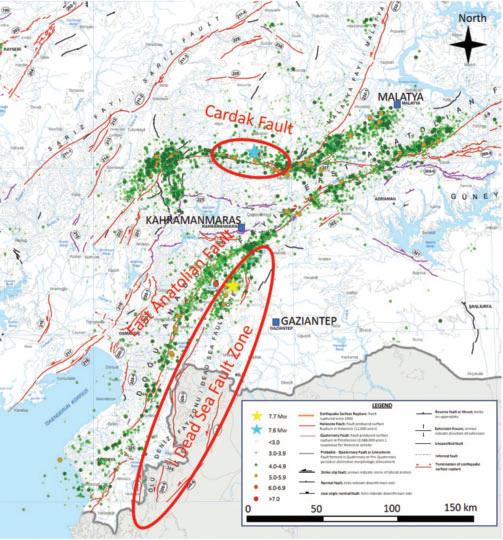
February 6, 2023
Efeçan Akyuz
On February 6, 2023, at 04:17 in southeastern Turkey, Kahramanmara was shaken by an earthquake with a depth of 8.6 km, and a magnitude of Mw 7.7 centered in Pazarcık. Roughly eight hours later, while the effects of this devastating earthquake were just beginning to emerge, a second destructive earthquake with a magnitude of Mw 7.6 occurred at a depth of 7.0 km beneath Kahramanmara Ekinözün, 50 km north of the epicenter of the first earthquake. The epicenter of the first earthquake is located on the main branch of the East Anatolian Fault (EAF). The second earthquake is located on the 85-km-long Çardak fault.
The earthquakes occurred in a highly active triple junction region between the African, Arabian, and Anatolian plates in the eastern Mediterranean. In this region, the Dead Sea Fault (DSF) is the main plate boundary structure between the Arabian and African plates to the south. Cyprus Arc structures, offshore to the southwest, accommodate collision between
the African and Anatolian plates, and the East Anatolian fault accommodates left-lateral motion between the Arabian and Anatolian plates. Current tectonic deformation in the region occurs on the large plate boundary faults described above as well as numerous smaller secondary structures (Barka and Reilinger, 1997; McClusky et al., 2000; Reilinger et al., 2006).
These two earthquakes affected approximately 14 million people and ten big cities in Turkey and six cities in Syria. The cities affected by the earthquake include, Malatya, where I live with my family. The area affected by the earthquake is approximately 110,000 km2.
I am a geological engineer living with my family in the Malatya region. Two years ago, my wife, son, and our dog Latte moved from Ankara to this area as I took a new job with a large mining company in the Hekimhan district of Malatya. The district where we live is located approximately 150 km northeast of the epicenter of the first earthquake and approximately 100 km northeast of the second earthquake.
During the earthquake, I woke up with my wife, son, and our dog and wanted to escape from the building we were in, but it was difficult to even stand up due to the very strong shaking. Since there was no place where we could drop, cover, and hold in the room we were in, we created a life triangle right next to our bed to increase our chances of survival in case the building collapsed. After 65 seconds of shaking, we left the building when the shaking ended. Unfortunately, on the day of the earthquake, and the next day, there was a very heavy

HEADER HERE 20 AEG NEWS 66(2) Spring 2023 PROFESSIONAL CONTRIBUTIONS
Efeçan and his family twelve hours before the quake
snowstorm in the region. We reached our car through the snow and moved it to an open area away from the buildings. After the first earthquake, we expected aftershocks, which were expected to be smaller. We did not expect a second large earthquake on a different fault line. For this reason, we thought it would be safe to enter our building, which remained intact, four to five hours after the first earthquake.
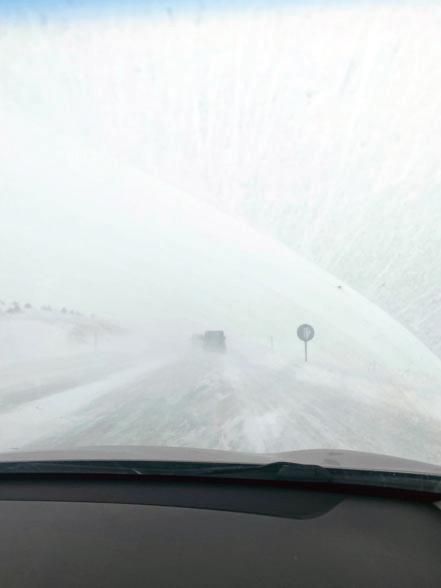
While we were in our house, the second earthquake struck at 13:24 and lasted for 45 seconds. Latte started to bark, cry, and behave crazily about three minutes before the shaking started. My wife took our son and left the building in about ten seconds, and I left the building right after them, but I saw the elderly people in the building were having trouble walking with the strong shaking, so I entered the building again and helped them leave. I was lucky, I know. This is not recommended behavior, but I can tell you that in the moment there was no other option. In the meantime, our dog would not leave the building because of the shock he had, and he was crying inside. I picked him up and took him outside. We were all cold in the snow without shoes and coats. After the shaking of the second earthquake passed, I quickly returned to the building and gathered our coats and shoes.
We settled in our car again to spend the day and night. After the second earthquake, markets and restaurants were closed, and it became difficult to find water or food. I found a small market and restaurant and was able to get the mate-

rials we needed to survive the night. My family passed that night by sleeping in turns in the car under heavy snowfall. I was checking the snow level every hour in case it clogged the exhaust of the car. When we woke up in the morning, we saw that about 40 to 50 cm of snow had fallen and transportation had effectively stopped. We knew assistance for the affected area would become very difficult.
After the weather cleared enough to drive the next morning, we went to the town center and got gas for our car. Many people who had fled from Malatya city center the day before had come to our town, which had relatively minor damage, and there was already a shortage of materials there. At the gas stations, only five liters of gasoline were given to each vehicle, and there was a lack of water and food in the markets. We took what supplies we could get and drove our vehicle close to our house. It was impossible to reach the front door because of the snow. My wife and I went inside in turn and collected the items on the list that we had prepared earlier that night. After packing our urgent belongings, we set out in the direction of the city of Samsun, which is about 500 km from the epicenter. This is where my wife’s family is located.
Along the way, we saw trucks carrying material aid, excavators and construction equipment, and thousands of vehicles with volunteers that went to the region to rescue people in the destroyed buildings. Unfortunately, aid would not arrive until the next day due to the snowstorm and the destroyed bridges, highways, and tunnels. We reached Samsun after a difficult journey due to our frazzled state, lack of sleep, and the ongoing snowstorm. Thankfully, the trauma to my family has only been psychological. Our house is not destroyed, and we suffered no loss of life. It is very sad to imagine and empathize with the experiences of the people in the devastated cities, the people who lost everything, the people who were rescued from under the rubble, the people who were not. My family is grateful to have survived and able to plan our future.
Today (13 February 2023), as I write this from a coffee shop in Ankara, it has been determined that 31,625 people lost
HEADER HERE Spring 2023 AEG NEWS 66(2) 21
PROFESSIONAL CONTRIBUTIONS
The view during the harrowing drive away from the quake
Our boy and his dog spend 42 hours in the car in the snow after escaping the quake
their lives and 80,278 were injured in Turkey, and these numbers are unfortunately increasing every day. Currently, approximately 120,000 staff and an unknown number of volunteers are working in the areas affected by the earthquake. Search and rescue teams of 6,636 people came to help from all over the world. With each passing hour, unfortunately, the hopes for reaching those who are under the rubble are dwindling.
Those who survived the earthquake stay in tents provided by the state and try to survive with the aid materials sent. Considering that the air temperatures in the region dropped to -15 degrees Celsius, a large quantity of blankets and winter clothes were sent for aid. Apart from these, large quantities of food, water, hygiene and medicine kits are still headed to the region. Any help is valuable in this event where millions of people were affected. Every donation, big or small, can affect many people’s lives. Due to the exchange rate difference of the Turkish Lira, even a small donation can be a huge help. Here are some items that can be purchased for $10: 40 loaves of bread, 100 half-liter bottles of water, 40 packs of ready-to-eat food, 450 diapers, one infrared heater, two pairs of children’s boots, a children’s winter jacket, etc. The Ministry of Interior, Disaster and Emergency Management (AFAD) started an Earthquake Humanitarian Aid Campaign. Donation accounts can be found at https://en.afad.gov.tr/earthquake-humanitarian-aid-campaign web site.
I’m a geologist, and I had the chance to work on active fault studies around Turkey. I understand seismic hazards and I’ve felt earthquakes before including Mw 7.4 Gölcük Earthquake on 17 August 1999 and Mw 7.2 Düzce Earthquake on 12 November 1999 which occurred on North Anatolian Fault. But my experience on this earthquake was much worse than any other I had before, and this is not the sort of

thing you can read in a book or watch on TV. Unfortunately, there is nothing that can really prepare you for something like that, and the only reliable truth is geotechnical science and engineering.
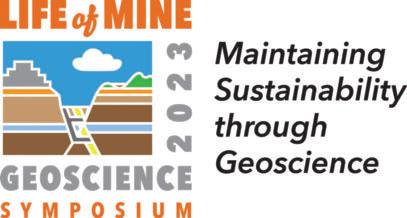
I hope this information and our story provide an idea of what it was like from a personal perspective and also a general awareness of the situation. If you have other questions, feel free to contact me through AEG or efecanak100@gmail.com.
References
Barka, A.A., and Reilinger, R., 1997, Active tectonics of the Mediterranean region: deduced from GPS, neotectonic and seismicity data: Annali di Geophis., XI, 587–610.
Kürcer, A., Elmacı, H., Ozdemir, E., Güven, C., and Ozalps, S., 2023, 06 UBAT 2023 KAHRAMANMARA DEPREMLER GENLETLM BLG NOTU.
Emre, Ö., Duman, T.Y., Özalp, S., Elmacı, H., Olgun, . ve arolu, F., 2013, Açıklamalı Türkiye Diri Fay Haritası:, Maden Tetkik ve Arama Genel Müdürlüü, Özel Yayın Serisi-30, Ankara-Türkiye, Ölçek 1:1.250.000.S
PROFESSIONAL CONTRIBUTIONS 22 AEG NEWS 66(2) Spring 2023
Visit: https://www.minesymposium.org/
Tectonic map of Turkey
Puget Sound Chapter Fidalgo Ophiolite Field Trip
Thomas
The Puget Sound Chapter of AEG teamed with the Northwest Geological Society to hold a weekend field trip in September 2022. The trip focused on the Fidalgo Ophiolite complex on Whidbey Island, Fidalgo Island, and the small islands of the San Juan archipelago. The twoday trip was led by Dr. John Oldow, retired structural geology professor from UT-Dallas and Rice University and a thirdgeneration resident of Fidalgo Island.

Participants observed evidence that reinterprets the ophiolite from being an intact slice of crust from the mantle to the ocean floor to a complex mélange of blocks from the size of a van to an island. The trip featured a day on a chartered water taxi that took the group to small islands and beaches that are otherwise inaccessible.

Doe, Chair
HEADER HERE Spring 2023 AEG NEWS 66(2) 23
FIELD TRIPS
Trip leader John Oldow pointing our features of mélange blocks within the Fidalgo Ophiolite
Participants at the Ophilitic mélange on a boat-accessible beach in the southern San Juan Islands
Cities of the World Editor Wanted –A Volunteer Position
AEG is still in need of an editor for our Cities of the World project. These are generally technical publications written by local- and subject-matter experts, often over the course of several years. Final reports are published and made available to AEG members. The editor role requirements: A variety of writing/editing in MS Word and publication project management skills are necessary to complete this role. The editor would also be asked to suggest new ideas for process improvement and the long-term development of the series.
Time requirements: Approximately eighty hours for a first draft comment review and forty hours for each subsequent round of review (per document) • One hour monthly for Communications Committee calls • Approximately two–four hours per month corresponding with the various city teams to keep the various articles on track
Interested candidates should contact AEG Vice President Sarah Kalika at VP@AEGweb.org.
Correction: The Summary of Membership Categories in the AEG 2022 Annual Report/2023 Directory (page 16) contained some errors. The table below provides the corrected numbers. AEG News regrets the error
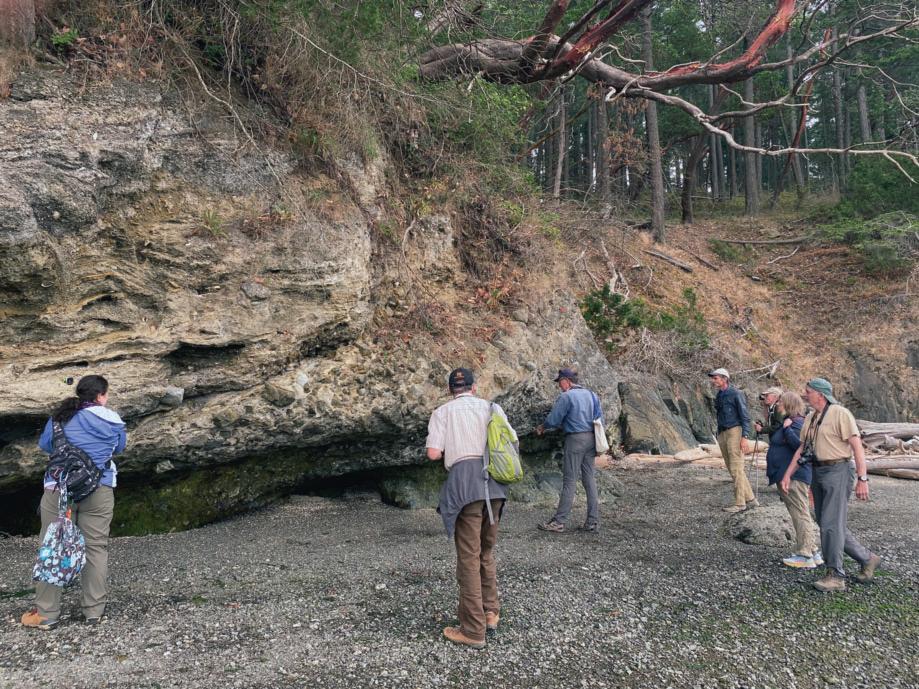
Summary of Membership Categories
HEADER HERE 24 AEG NEWS 66(2) Spring 2023 FIELD TRIPS
Basal breccia along thrust separating argillites and ophiolitic mélange on Cypress Island in the Southern San Juan Islands
2017 2018 2019 2020 2021 2022 Regular 1,511 1,503 813 1,223 1,322 1,384 Affiliate 58 53 30 43 51 49 Emeritus 41 35 22 27 33 39 Student 930 795 1,105 1,147 1,087 1,159 Early Career 34 24 41 88 125 167 Honorary 18 17 19 20 22 22 International 70 71 42 74 84 77 Life 51 55 53 52 51 52 Senior-Emeritus 107 108 128 133 142 143 Teacher 36 40 33 55 76 84 Total Membership 2,856 2,701 2,286 2,862 2,993 3,176
Sacramento Chapter
Volcanology Field Trip to the Sutter Buttes
John Murphy, PG, CHG, Chapter Chair
On November 20, 2022, the Sacramento Chapter hosted a field trip in coordination with the Middle Mountain Foundation (https://www.middlemountainhikes.org/index.html) to the seemingly anomalous extinct Sutter Buttes volcanic domes approximately fifty miles north of Sacramento, California. Standing amongst the broad, flat Sacramento Valley, the Sutter Buttes do not fall on the geographic trend of either the Cascade Range or Coast Range volcanic systems, but the composition, texture, and age of the volcanic rocks suggest an association with the Coast Range volcanics.
Led by Sacramento State professor of volcanology Dr. Brian Hausback, a group of nineteen AEG members and nonmembers hiked among the remains of Pélean dome eruptions that produced rhyolite and andesite deposits. The approximately seven-mile hike took the group through the rampart and moat parts surrounding the castellated core of the 1.6–1.4-million-year-old volcanic system. Along the way, Dr. Hausback
encouraged observations and led group discussions that focused on the regional setting, volcanic history, types of volcaniclastic flows, fracture characteristics, magnetic records, and more recent landslide features.

The group investigated the Pigeon Creek deposit within a rampart (see Figure 1). The bottom layer is an ash flow with crossbedding, contains abundant pumice, and marks the opening phase of a large eruption or volcanic surge. The upper section represents a hot pyroclastic flow from a dome collapse. The group also discussed radial cracking observations and magnetic polarity findings that constrain timelines and flow mechanisms of the deposit.
The “Enchanted Forest” landslide was another highlight (see Figure 2). The area includes characteristics indicative of landslides such as hummocky geomorphology while stable tree growth suggests a long period of inactivity.
HEADER HERE Spring 2023 AEG NEWS 66(2) 25 FIELD TRIPS
Figure 1: The group investigates the Pigeon Creek deposit within a rampart.
Index to Advertisers
ATTENTION CHAPTERS:
Field Trip articles are a great way to let AEG Members know what your Chapter has been up to and share some interesting geologic stories from your area.
Consider designating one or two student members to take notes and photographs and write up a story for the News! It's a good opportunity for students to get some practice writing informal scientific articles and provides a networking opportunity. Submit your field trip articles to news@aegweb.org.

FIELD TRIPS 26 AEG NEWS 66(2) Spring 2023
AEG 2023 Corporate Sponsor Listing . . . . . . . . .9 AEG 2023 Annual Meeting . . . .Inside Front Cover AEG Future Meetings . . . . . . . .Inside Back Cover Geobrugg . . . . . . . . . . . . . . . . . . . . . . . . . . . . .8 Life of Mine Geoscience Symposium . . . . . . . .22 Maccaferri . . . . . . . . . . . . . . . . . . . . . . . . . . .18 Scintrex . . . . . . . . . . . . . . . . . . . . . . . . . . . . .18 UPenn . . . . . . . . . . . . . . . . . . . . . . . .Back Cover To advertise in AEG News, contact AEG Headquarters at advertising@aegweb.org
Figure 2: Looking back at the “Enchanted Forest” landslide
Carolinas Chapter
The Homefront
The Homefront
Jennifer Thomas, PG, Chapter Chair
The Carolinas Chapter has been in reboot mode for the past year, and our meeting attendance has gradually increased. We’re getting closer to pre-pandemic attendance levels now. Old members are renewing and we’re rebuilding our sponsor base. Our chapter has 300 members, half of whom are students.
I spearheaded the summer chapter meeting at Wedge Brewing in Asheville, North Carolina, on September 28. Forty attendees ate barbeque and listened to Mark W. Carter’s presentation on the 2020 Sparta, North Carolina, intraplate earthquake (magnitude 5.1) and East Coast earthquakes in general. This was the strongest earthquake recorded in North Carolina for 104 years and was felt throughout the eastern United States. Mark discussed the causes of these earthquakes and how they fit into a larger pattern. We had a group of students from East Tennessee State University (ETSU), as is typical at our chapter meetings in Asheville. While not actually located in the Carolinas, ETSU is much closer to North Carolina than Nashville and the students participate in western North Carolina events.
Our fall chapter meeting was on November 10 at Natty Greene’s brewpub in Greensboro, North Carolina. Ned Billington spoke on geophysical methods for bedrock characterization. Paul Weaver planned and executed this meeting. Paul serves as AEG Secretary, and though he doesn’t currently hold a position on the Chapter board, he attends our planning meetings and remains a very active volunteer and advisor.
Rick Kolb and I organized our winter meeting, which was on January 26, 2023, in Charlotte at Olde Mecklenburg Brewery. We had seventy people in attendance, with quite a few UNC-Charlotte students. AEG President Nate Saraceno presented Landslide Reconnaissance and Mitigation in Appalachia. Though the case study he used was in Kentucky, landslides are a concern in the Carolinas, too, as the Appalachian Mountains cover the western portion of our area. The meeting was the last stop on his tour of the Carolinas section, which began on January 22 and included five universities. Nate made presentations to geology departments at ETSU, the University of South Carolina, Furman University, Clemson University, and the University of North Carolina at Charlotte. In addition to speaking on landslides, Nate discussed his career path and finding a job in the geosciences. At each stop, Nate spent time after the presentation talking to the students and faculty and usually went out for dinner with them afterward. On January 27, he drove back home to Pittsburgh.
Great Basin Chapter
Merrily Graham, Chair
On January 12, 2023, the Great Basin Chapter hosted Dr. Robert Watters, who presented his thoughts on geological engineering, engineering geology, and environmental geology. The scope of a lifetime of work stemmed from his love of hiking around his home surroundings on the Isle of Skye off Scotland’s northwest coast. While he currently resides in Nevada, Dr. Watters still maintains his connection to the Scottish Highlands and the same land that started it all. The meeting filled the room to capacity as many wanted to pay tribute to this most cherished professor, who is soon to retire from the University of Nevada-Reno’s Mackay School of Earth Sciences and Engineering.
Mile High Chapter
Denise C. Garcia, Mountain-Prairie Region Director; Kaitlin Reiman, Mile High Chapter Secretary
In 2022, the Mile High Chapter was able to fully resume our in-person meetings, which has been great! Most of our meetings were held at the Trailhead Taphouse in Golden, Colorado. We started 2022 with Rick Wooten, the 2022 Jahns Lecturer, presenting in February at the Buffalo Rose, a very nice venue in downtown Golden. The meeting was very interesting and well attended! In March, Lynne Carpenter, the Geologic Hazards Program lead for the US Forest Service presented on
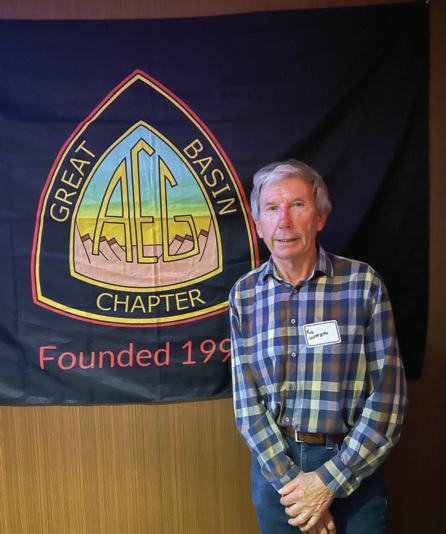
HEADER HERE Spring 2023 AEG NEWS 66(2) 27 HEADER HERE
Dr. Robert Watters
the Landslide Preparedness Act. April brought our annual Student Night. Christoph Goss gave an exciting talk in May to wrap up before the summer break.
The fall meetings began with an introduction to Colorado’s new State Geologist, Matt Morgan, and Jonathan Lovekin with the Colorado Geological Survey also gave a presentation on the CGS Land Use Review case histories and success stories. The AEG Mile High Chapter partnered with the Colorado Association of Geotechnical Engineers (CAGE) and the American Society of Civil Engineers (ASCE) Colorado Section to host the bi-annual Rocky Mountain Geoconference in November. The event was very informative and a great chance to catch up with our peers. The final meeting of the fall was Todd Roberts and Nate McGee presenting on Modern IoT (Internet of Things) applications and digital twins.
We kicked off our new year of meetings in January with a fantastic presentation from Ryan Marsters of Lithos Engineering about the Spiro Mine Tunnel Water Supply System Rehabilitation. In February, Matt Monteith of CTL|Thompson, Inc., and Kanaan Hanna of Mining - Geotechnical Services presented on their work with Mine Subsidence Hazard Mitigation in Golden.
This spring, we are lucky enough to host the 2022–23 Jahns Distinguished Lecturer Vince Cronin in March for his talk Moving Experiences with Landslides, followed by Student Night in April. We are excited to continue another year of meetings, connecting with each other and young professionals. The next Chapter meeting will be in Golden on May 9!
New York-Philadelphia Chapter
Loren Lasky, Chair


Closing Out 2022
The New York-Philadelphia Chapter (NYP) ended 2022 by showcasing local Native American history and the impressive collection of arrowheads and stone tools found in our area. On December 8, 2022, three of the curators of the new Flemington Historical Society Museum display, NYP


Members Mark Zdepski and Dr. Greg Herman, and their collecting colleague, Ed Fimbel, explained their project and brought along hand samples. We met, as usual, for dinner at the Clarion Hotel in Somerset, New Jersey, and welcomed new sponsor Randy Irwin and Site Quest, his company that specializes in GPR, videography, and subsurface utility clearances.
At the end of the year, NYP also charitably passed the “hard hat” again for the AEG Foundation and collected $300 which was matched by another $300 from the Chapter. The contribution was earmarked to be split equally among three of the Foundation’s new funds: the West-Gray Fund for students east of the Mississippi; the Susan Steele Weir, aka “Women of Steele” Fund, to support women in the profession of engineering geology; and the Foundation’s newest fund, the Diversity Fund, designed to promote the goals of Diversity, Equity, and Inclusivity through academic scholarships.
2023 Meetings
NYP started the new year with a state-of-the-art talk on the use of drones to monitor coastal erosion and rate the cost-effectiveness of engineered dune berms installed after Hurricane Sandy. Our January 12, 2023 guest speaker, Jesse Kolodin, was an award winner at an early NYP Student Night and is now an Adjunct Professor at Montclair State University as a specialist in both economics and drone technology. We were happy to welcome another new NYP sponsor in January, S2C2, a local firm that specializes in High-Resolution Site Characterization and Database Management, represented by Jason Ruf, their Manager of Data Visualization Services. The January meeting was attended by a noticeably younger, tech-savvy crowd.
THE HOMEFRONT 28 AEG NEWS 66(2) Spring 2023
Speaker Greg Herman discusses Native American shell jewelry at the December 2022 NYP dinner meeting.
Native American stone tools and arrowheads collected in central New Jersey were on display at the NYP December meeting.






HEADER HERE Spring 2023 AEG NEWS 66(2) 29 THE HOMEFRONT
Drone Speaker Jesse Kolodin, Adjunct Professor at New Jersey’s Montclair State University. (Jan 2023)
A noticeably younger, tech-savvy crowd attended NYP’s January 2023 drone talk, including Ryan Hummer (L) and Wesley Franco (R) of Appalachia Consulting.
New York Philadelphia "Regulars," L to R: Treasurer Ted Toskos, Member Andrew Judd, and Student Jonathan Roman.
Professor Alec Gates of Rutgers University-Newark spoke at NYP’s February 2023 meeting.
Tsunami travel time map shown at Professor Gate’s February meeting talk on geohazards.
Also in January 2023, the new crew of incoming NYP officers was gaveled into place: Loren Lasky, Chair; Jim Peterson, Vice-Chair; Ted Toskos, Treasurer; and Co-Secretaries Tim Hull and Tom Cumello. We appreciate all those who kept NYP afloat during Covid, including outgoing Treasurer Niall Henshaw, who joined Regional Director Curt Schmidt before the main speaker, to share a slide presentation about plans for AEG’s 2024 Annual Meeting here in Philadelphia.
The New York-Philadelphia Chapter rolled out the red carpet to students in February, and they did not disappoint! Sixteen students from area colleges accepted our invitation to hear Rutgers University-Newark Professor Alexander Gates present his talk on Geohazards in New Jersey at our dinner meeting on February 9, 2023.
We were pleased to welcome for the first time, Lafayette College Geology Professor Lawrence Malinconico and his students from neighboring Easton PA, plus graduate and undergraduate students from Rutgers University-Newark and
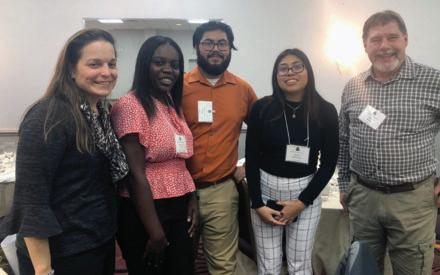


Montclair State. The NYP members were glad to share their enthusiasm about geology with students. And the students were pleased to be treated as budding young professionals and to meet NYP Members who were hiring entry-level geologists. The NY Philadelphia Chapter plans to help students and members build back momentum again after Covid by making a special effort to include students in our meetings.
Puget Sound Chapter
Stephanie Wanderer, LEG, Leadership Committee, and Tom Doe, LEG,
PhD, Chair

Reviving Chapter Activities Post-Pandemic
Puget Sound is home to a myriad of geologic wonders, geologic hazards, and booming growth and infrastructure projects. It is not at a loss for firms, agencies, universities, and folks involved in and invested in what the geology of the area brings to our region. However, the pandemic significantly reduced our ability to gather and share our knowledge and enthusiasm for environmental and engineering geology. Like most aspects of everyday life, the pandemic has shown a spotlight on challenges and barriers to gathering for AEG meetings, but it has also opened up some new opportunities. So, for the 2023 year and beyond, the Puget Sound Chapter seeks to revive membership, participation, and activities by incorporating a leadership committee.
At the October 2022 business meeting, former Secretary and newly elected Chair Tom Doe convened a group of interested folks who stepped forward to be on the leadership committee. This committee, operating with at least a Chair and Secretary, is a group of about fourteen area professionals and students who are active supporters and will help run the Puget Sound Chapter. Some emergent post-pandemic themes we want to focus on for 2023 include reducing meeting costs by having chapter meetings rotate among offices with large enough spaces; supporting meetings that
HEADER HERE 30 AEG NEWS 66(2) Spring 2023
THE HOMEFRONT
NYP officers Feb 2023 (L to R): Tom Cumello, Co-Secretary; Ted Toskos, Treasurer; and Niall Henshaw, Past Chapter Treasurer.
Lafayette College Professor Lawrence Malinconico and geology students from Lafayette College joined us at the NYP dinner meeting in New Jersey (L to R): Professor Malinconico; students Serafina Rivera, Jimmy Paugh, and Taylor Winninger-Sieve; Chapter Chair Loren Lasky; and student Elijah Halsey.
Rutgers-Newark students at Professor Gates’ geohazards talk (L to R): NYP Past Chair Rose DeLorenzo; students Tanisha Flatts (President of the RU-Newark AEG Student Chapter), Milka Casarrubias, and Jonathan Roman; and member Bob Barnes, February 9, 2023.
address non-technical topics like work-life balance, surviving and thriving as a consultant, and diversity in our profession; and planning a regional field trip. Of particular emphasis in 2023 will be rebuilding student participation and support. The annual student night, tentatively set for the April monthly meeting, showcases regional university and college students presenting their geologic research and studies.
The pandemic years were not all bad though! Of particular note in 2022, was a presentation on Empirical Analysis of Landslide Runout Equations for Glacial Strata, the Jahns Distinguished Lecturer presenting Debris Flows, Big Slow Movers and Rockslides, and a field trip on land and by sea to observe the Fidalgo Ophiolite Complex, led by retired structural geologist John Oldow (see the write-up on page 23 of this issue). And, while Zoom fatigue has hopefully faded, the ability for folks to attend a monthly Puget Sound Chapter meeting virtually remains.
Sacramento Chapter
Matt Buche, PG, Scholarship Chair
Spring Fun: Drill Class and Student Night

“In the spring, at the end of the day, you should smell like dirt.” –Margaret Atwood
And the AEG Sacramento Chapter could not agree more! The new year brings spring fun to Northern California in the form of the H. Ray Taber Foundation’s Free Drill Seminar, which was held on February 24, and the Sacramento Chapter’s Student Night meeting scheduled for April 19.


The H. Ray Taber Foundation is named after Harmon Ray Taber Sr., a founding member of AEG who served as president in 1963–64. As a tribute to Ray’s passion for engineering geology, one of the primary goals of the Foundation is to provide scholarships to geology students. The Foundation’s annual Drill Seminar is its main fundraiser and for more than two decades has given regional geology and engineering college students and young professionals a hands-on “day of opportunity” to learn about drilling from industry experts.
The free event and fundraiser were made possible again this year by the efforts of Foundation President Andy Taber and event coordinator and Foundation Secretary and Registrar Meredith Young, the volunteer operators and drill hands and


donated rig time from Taber Drilling and ConeTec, use of the beautiful Taber Ranch and Vineyard and Event Center venue and grounds, instruction from industry experts who volunteer their time at the three drilling stations (rotary, auger, and CPT), and the generosity of corporate sponsors who also meet with and give early career advice to students at the job fair station. You can find photos of all the fun at the H. Ray Taber Foundation’s website or LinkedIn page.
Here are a few numbers from this year’s Drill Seminar:
134 = students from the University of California: Berkley and Davis, California State University, Sacramento, and Stanislaus, and many early career professionals from local private firms and public agencies.
17 = sponsors: AGS, Armstrong & Associates, Atlas Geotechnical, Blackburn Consulting, ConeTec, Continental Drilling Tools & Supplies, Delve Underground, Gannett Fleming, GEI Consultants, Kleinfelder, Lettis Consultants International, PM Truck Repair, Reliable Tire Service of West Sacramento, Taber Drilling, WSP, Yocha Dehe Wintun Nation, and Youngdahl Consulting Group.
THE HOMEFRONT Spring 2023 AEG NEWS 66(2) 31
Andy Taber, President of the H. Ray Taber Foundation, welcomes students to the 2023 Drill Seminar and the Taber Ranch Vineyard & Event Center in what historically was the “sheep barn.”
Andy Taber giving the morning welcome. Drill Seminar volunteers (seated from L to R): AEG Sacramento Chapter Treasurer Chase White, Lettis Consultants International geologists Chris Bloszies and Stephanie Briggs
AEG Sacramento Chapter Treasurer Chase White gives instruction to students at the Rotary Drill station.
5 = AEG


Sacramento Chapter member volunteers: Chase White (Chapter Treasurer, H. Ray Taber Foundation Board of Directors, California Geological Survey), Francisco Saldana (Gannett Fleming), Ethan Leuchter (Lettis Consultants International), Meredith Beswick (Chapter Legislative Chair, Kleinfelder), and Matt Buche (Chapter Scholarship Chair, H. Ray Taber Foundation Board of Directors, Gannett Fleming).
Money raised through the Drill Seminar directly funds our undergraduate and graduate scholarships, the H. Ray Taber AEG Founders Scholarships, awarded each year at our Student Night meeting. Student Night encourages student poster presenters, scholarship applicants, and attendees to make valuable connections with working professionals. For example, many of us, myself included, can thank a connection made at an AEG event, which led to new opportunities, colleagues, and friendships. This year’s Student Night is on April 19 and is sure to be memorable.
Because of the generosity of the H. Ray Taber Foundation and Drill Seminar sponsors, larger scholarships are being offered this year: a $3,000 undergraduate and $5,000 graduate scholarship. Students from California State University, Chico and Sacramento, and the University of California, Davis, have already submitted their poster titles. It’s possible we may break last year’s record poster count. We’re returning to the trendy Drake’s Brewing Co., The Barn, in West Sacramento, for a buffet-style pizza party with the first round of drinks compliments of Gannett Fleming.





THE HOMEFRONT 32 AEG NEWS 66(2) Spring 2023
Ron Loutzenhiser (Geocon Consultants) and Matt Weil (Geosyntec Consultants) give instruction to students at the Auger Drill Station.
GEI Consultants geologist Nicole Cholewinski gives instruction to students at the Auger Drill Station.
Students learn about different career opportunities from professionals during the job fair, with company exhibits circling the outside of the wine-tasing room.
Stephanie Briggs of Lettis Consultants International visiting with two Drill Seminar students during the job fair.
Gannett Fleming geologist Francisco Saldana encouraged students to join AEG and emphasized the importance of licensure.
This year we have the pleasure of hosting the AEG 2022–23 Jahns Distinguished Lecturer, Dr. Vince Cronin, as our guest speaker. We feel very fortunate the timing worked out to have Dr. Cronin headline Student Night, a real benefit to students. Student Night event info, scholarship applications, and a registration link are posted to our Chapter website. We hope to
see you at Student Night. If you can’t make it but are a member of the extended Sacramento Chapter family (if you’re reading this, that includes you), please follow our LinkedIn group, where we’ll continue to share updates and photos. Here’s to a fun-filled AEG spring and 2023!
St. Louis Chapter

Luke Ducey, Vice President and Editor

Due to the postponement of its October meeting, the November meeting of AEG’s St. Louis Chapter consisted of a double presentation with talks provided by Dr. Eugene Torgashov and Dr. Ronaldo Luna. The meeting took place at an office headquarters in St. Louis, and everyone in attendance enjoyed the free event, which featured catered local barbeque from Sugarfire Smoke House.
Dr. Evgeniy “Eugene” Torgashov, PhD, a Geophysics Project Manager at Geotechnology, LLC, presented on Keys to a Successful Geophysical Survey. Dr. Ronaldo Luna, PhD, PE, and a Professor of Civil Engineering at Saint Louis University discussed restructuring and merging programs in the science and engineering sides of the geotechnics discipline. The event drew an attendance of around twenty and included students from local universities, professors, and environmental/geology professionals.
During December, the Chapter took a winter hiatus due to the weather never cooperating, students being busy with finals, and everyone being busy during the Christmas and New Year holidays.
The Chapter decided to hold an axe-throwing social event on Thursday, January 26, to get everyone back together to network and talk about their careers, school, work life, and more importantly to throw some axes. This was a free event for
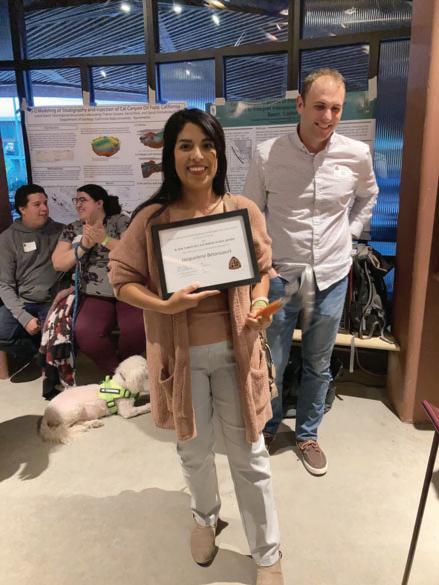
HEADER HERE Spring 2023 AEG NEWS 66(2) 33
THE HOMEFRONT
Ray Taber AEG Founders undergraduate scholarship winner Jacquelene Betancourt receives her award certificate and rock hammer as AEG Sacramento President John Murphy, PG, CHG, looks on. Jacquelene is now a Staff Geologist with Wallace-Kuhl & Associates.
Matthew Wagoner, Geological and Earth Sciences student at California State University, Chico, presenting his poster, Geochemical Analysis of Metavolcanic and Ultramafic Formations Displays Nickel and Chromium Toxicity in Soil Near Paradise, CA, at the 2022 AEG Sacramento Chapter Student Night meeting.
members, and they were encouraged to bring a friend, coworker, or potential AEG member who might be interested in joining. Around fifteen people came out to throw axes, knives, ninja stars, and even a shovel. This was a good way to bond with other AEG members and unwind from the holidays and general stress as you can see from the accompanying photos!



HEADER HERE 34 AEG NEWS 66(2) Spring 2023
THE HOMEFRONT
Students from University of Missouri throwing axes at the January social
Students and professionals enjoyed axe-throwing and conversation at the January social.
The Axe House provided a laid-back atmosphere for conversation during the January social.
for these future AEG Annual Meetings Save the Dates…
AEG 67th Annual Meeting Philadelphia, Pennsylvania

SEPTEMBER 10–14, 2024
Hilton Philadelphia at Penn’s Landing
AEG 68th Annual Meeting Chicago, Illinois
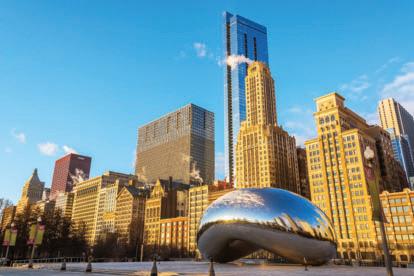
SEPTEMBER 23–27, 2025
Westin Chicago River North
Chicago is one of the top tourist destinations in the United States for a reason. It’s a welcoming city with plenty of world-class attractions. Located on Lake Michigan in Illinois, Chicago is famed for its bold architecture. In additional to engineering geology, the AEG 2025 Annual Meeting will focus on sustainability, health, climate change, and environmental geology.
Philadelphia, the nation's birthplace and capital from 1790 to 1800, is renowned for its rich history on display at the Liberty Bell, Independence Hall (where the Declaration of Independence and Constitution were signed), and many other historical sites. Also iconic are its cheesesteaks and the steps of the Philadelphia Museum of Art immortalized by Sylvester Stallone’s triumphant run in the film “Rocky.”

The Meeting Hotel
Overlooking the Delaware River with views across to New Jersey, the hotel is less than a mile from the Liberty Bell, the Museum of the American Revolution, and the Benjamin Franklin Museum. They are adjacent to Spruce Street Harbor Park, and Society Hill is less than a mile away. The hotel is located on the waterfront in Center City’s Historic District and steps from numerous attractions and an eclectic array of restaurants.
The Meeting Hotel
Located in the heart of downtown Chicago in the prestigious River North neighborhood of the city, the Westin Chicago River North’s location makes it a perfect base to explore the historic and energetic Windy City with nearby attractions including the Millennium Park, The Chicago Theatre District, and the vibrant Chicago Riverwalk. Refreshed in early 2020, the flexible event space offers the perfect setting for meetings. Recharge in your choice of accommodations, from traditional rooms to luxury suites, all with a view of the Chicago River or the downtown skyline. Maintain your health goals with the delicious and healthy on-site dining at 320 RiverBar and the state-of-theart WestinWorkout fitness studio. Enjoy complimentary fitness classes as well as Rise + Ride with Westin and Peloton.

Penn’s Master of Science in Applied Geosciences is now fully
With Penn’s online Master of Science in Applied Geosciences, you can make an impact in environmental geology, hydrogeology, or engineering geology.

• Learn from experienced industry experts
• Prepare for your next professional move ahead application details.
Details at: www.upenn.edu/msag
online!





































































































































































